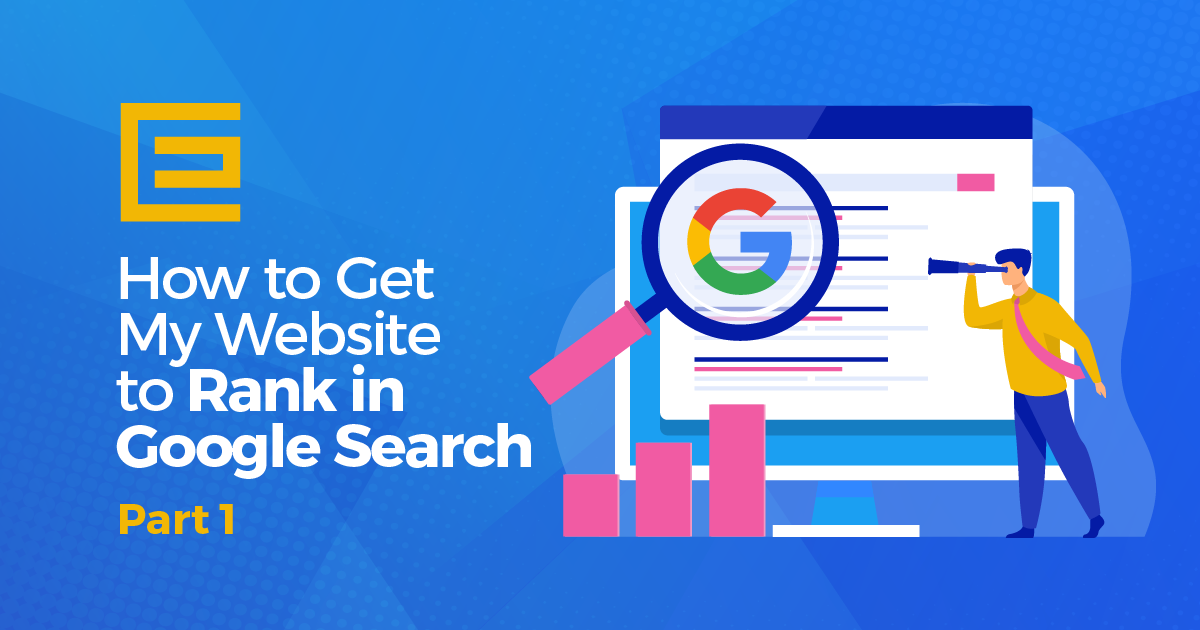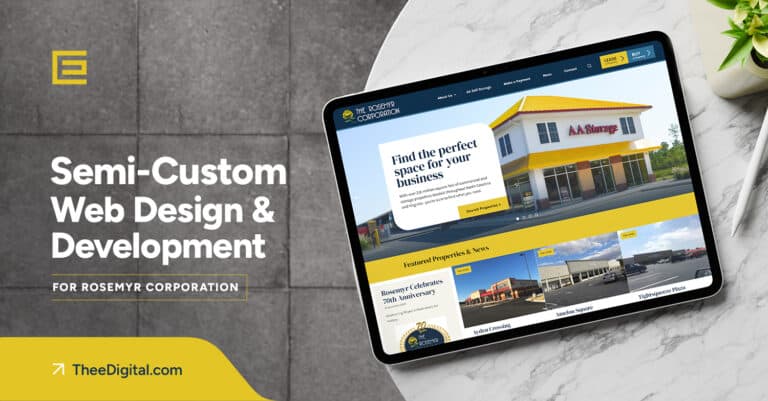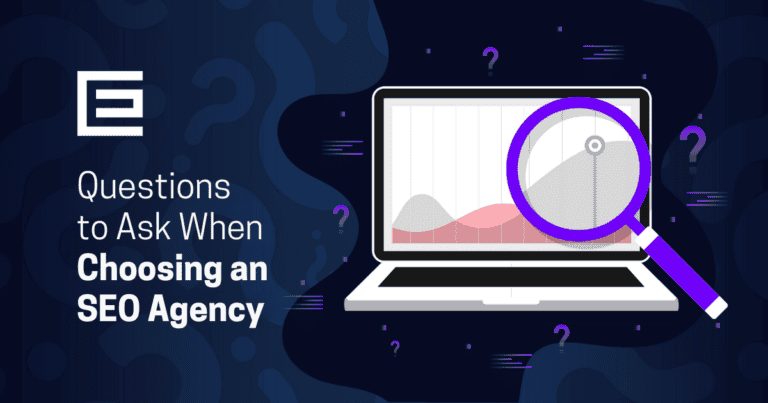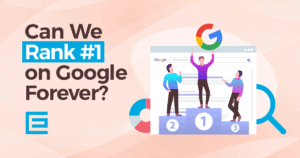Mastering Google Rankings: A Comprehensive Guide

Every day at TheeDigital we help clients rank their websites on Google and get more leads. In this article, I’ll explain how to get higher rankings in Google.
Being the top result in Google’s search can be a game-changer for businesses. Ranking high on Google is not just about gaining visibility; it’s a pivotal factor in driving organic traffic, enhancing brand credibility, and ultimately, fueling growth and profitability. As the most widely used search engine, Google is the gateway through which a vast majority of internet users discover products, services, and information. Therefore, securing a top position in Google’s search results can significantly amplify a website’s reach and influence.
Understanding Google’s algorithmic changes is crucial for effective search engine optimization (SEO). These changes often aim to penalize poor-quality content, reward high-quality information, and enhance the overall user experience. As a result, strategies that were effective yesterday might not yield the same results today, necessitating a flexible and informed approach to SEO. Staying updated with these changes and understanding their implications is key to crafting strategies that not only elevate a website’s ranking but also align with Google’s commitment to delivering the most relevant and valuable content to its users.
- 1Mastering Google Rankings: A Comprehensive Guide
- 2Optimizing for On-Page SEO
- 3Enhancing Off-Page SEO
- 4Technical SEO Essentials
- 5Content is King
- 6User Experience and Engagement
- 7Local SEO for Local Businesses
- 8Tracking and Analyzing Your SEO Efforts
- 9Recap of Key Strategies for Ranking High on Google
Optimizing for On-Page SEO
In the quest to rank higher on Google, understanding and mastering its ranking factors is crucial. These factors, particularly those related to on-page optimization, play a significant role in how Google evaluates and ranks web pages. On-page optimization involves fine-tuning various elements of your website to make it more search-engine friendly and relevant to user queries. This section delves into the key strategies of on-page optimization, including keyword research and usage, optimizing title tags and meta descriptions, creating high-quality content, and implementing effective internal linking strategies.
Keyword Research and Usage
The foundation of on-page SEO is keyword research. It involves identifying the terms and phrases that potential visitors are using to find information related to your niche or industry. Utilizing tools like Google Keyword Planner or other SEO software can provide insights into the search volume and competition level of these keywords. Once identified, these keywords should be strategically incorporated into your website’s content, including headings, subheadings, and the body text. However, it’s crucial to avoid keyword stuffing; instead, focus on using keywords naturally and contextually to maintain readability and relevance.
Optimizing Title Tags and Meta Descriptions
Title tags and meta descriptions are critical HTML elements that provide a snapshot of your page’s content. The title tag, which appears as the clickable headline in search results, should be concise, compelling, and include your primary keyword. Similarly, the meta description offers a brief summary of the page’s content and should be engaging while also incorporating key phrases. Well-crafted title tags and meta descriptions not only help with rankings but also improve the click-through rate (CTR) from the search results page.
Creating High-Quality, Relevant Content
Content is the cornerstone of your website and a major factor in Google’s ranking algorithms. High-quality content is original, informative, and answers the queries of your target audience. It should provide value, whether that’s through insightful analysis, detailed explanations, or solutions to specific problems. Google favors content that demonstrates expertise, authority, and trustworthiness (E-A-T). Therefore, regularly updating your site with well-researched and comprehensive content can significantly boost your SEO efforts.
Internal Linking Strategies
Internal linking refers to the practice of linking to other pages within your website. This not only helps visitors navigate your site more effectively but also allows search engines to crawl and index your pages more efficiently. Internal links should be used judiciously to connect relevant content, helping to establish a hierarchical structure and distribute page authority throughout your site. Using descriptive anchor text for these links is also important, as it provides context to both users and search engines about the linked page’s content.
By focusing on these key areas of on-page optimization, you can significantly improve your website’s visibility and ranking on Google. It’s a process that requires ongoing attention and refinement, but the payoff in terms of increased traffic and user engagement can be substantial.
Enhancing Off-Page SEO

While on-page SEO focuses on optimizing elements within a website, off-page SEO revolves around external factors that influence a site’s ranking on search engine results pages (SERPs). One of the most critical components of off-page SEO is backlinks, which are links from other websites pointing to your site. Google views these backlinks as votes of confidence or endorsements of your content’s quality and relevance. The more high-quality backlinks a website has, the more likely it is to rank higher in search results.
Importance of Backlinks in Google’s Ranking
Backlinks have long been a cornerstone of Google’s ranking algorithm. They act as trust signals, indicating that other websites find your content valuable enough to link to. However, not all backlinks are created equal. Google evaluates the quality and relevance of these links. Backlinks from authoritative, reputable websites carry more weight than those from lesser-known or spammy sites. In essence, it’s not just about the quantity of backlinks but more importantly, their quality.
Techniques for Building High-Quality Backlinks
Building high-quality backlinks requires a strategic approach. Some effective techniques include guest blogging on reputable websites, creating shareable infographics, and conducting original research or surveys that others in your industry would reference. Additionally, building relationships with influencers and industry peers can lead to natural link-building opportunities. It’s also essential to regularly audit your backlink profile to remove or disavow any low-quality or spammy links that could harm your site’s reputation.
The Role of Social Signals and Brand Mentions
While the direct impact of social signals (likes, shares, tweets) on rankings is still a topic of debate among SEO professionals, there’s no denying that they play a role in enhancing online visibility. A piece of content that’s widely shared on social media can attract more traffic and, potentially, backlinks. Similarly, brand mentions, even without a direct link, can boost your site’s authority in the eyes of search engines. Google’s algorithm is sophisticated enough to recognize and reward positive brand sentiment and mentions across the web.
Off-page SEO, particularly the building and nurturing of high-quality backlinks, is vital for improving a website’s position on SERPs. Coupled with robust on-page SEO strategies, it can significantly enhance a site’s visibility, credibility, and authority in its niche.
Technical SEO Essentials
Technical SEO is a crucial aspect of optimizing a website for better search engine rankings and user experience. It involves a range of practices that ensure your website is structured and delivered in a way that search engines can easily understand and index. Three key elements of technical SEO include ensuring website speed and mobile-friendliness, utilizing structured data and schema markup, and implementing secure browsing protocols like HTTPS.
Ensuring Website Speed and Mobile-Friendliness
Website speed is a critical factor in user experience and search engine rankings. Google prioritizes websites that load quickly, as slow-loading sites tend to have higher bounce rates and lower user engagement. Optimizing images, leveraging browser caching, and minimizing the use of heavy scripts can significantly improve site speed. Additionally, with the increasing use of mobile devices for internet access, mobile-friendliness has become a non-negotiable aspect of website design. A mobile-friendly website not only provides a better user experience but also ranks higher in Google’s mobile search results.
The Role of Structured Data and Schema Markup
Structured data and schema markup are tools that help search engines understand the content of your website. By tagging specific elements of your content (like product prices, customer reviews, or event dates), you provide explicit clues about the meaning of these elements. This can lead to richer search results, including featured snippets and enhanced descriptions, making your website more attractive and informative in SERPs. Implementing schema markup correctly can significantly boost your website’s visibility and click-through rates.
Secure Browsing and HTTPS as a Ranking Signal
Google has been using HTTPS as a ranking signal since 2014. HTTPS (Hypertext Transfer Protocol Secure) is an internet communication protocol that protects the integrity and confidentiality of data between the user’s computer and the site. Websites with HTTPS encryption are favored by Google as they provide a secure and safe browsing experience. Migrating from HTTP to HTTPS not only helps improve your website’s ranking but also builds trust among your users, especially for e-commerce sites where secure transactions are essential.
In summary, technical SEO is about making your website easy for search engines to crawl and understand while ensuring a fast, secure, and user-friendly experience. By focusing on these technical aspects, you can lay a solid foundation for your overall SEO strategy, leading to better visibility and higher rankings in search engine results.
Content is King
In the realm of SEO and digital marketing, the phrase “Content is King” has become a mantra, emphasizing the pivotal role of content in driving online success. High-quality content is the cornerstone of any effective SEO strategy, as it attracts and engages users while satisfying search engine algorithms. Key to creating impactful content is understanding user intent, ensuring depth and comprehensiveness, and maintaining content freshness through regular updates.
Crafting Content that Aligns with User Intent
Understanding and aligning with user intent is crucial in content creation. User intent refers to what users are really looking for when they type a query into a search engine. This could range from seeking information or answers (informational intent), looking to make a purchase (transactional intent), or finding a specific website (navigational intent). By tailoring your content to meet these intents, you increase the likelihood of satisfying user needs and improving your search engine rankings. This involves using the right keywords, answering potential questions, and providing valuable insights in a format that resonates with your target audience.
The Significance of Content Depth and Comprehensiveness
Depth and comprehensiveness in content are increasingly important in a competitive digital landscape. Google’s algorithms favor content that provides thorough, in-depth information on a topic. This means going beyond surface-level details to offer comprehensive insights that address various aspects of a topic. Such content not only ranks better but also positions your site as an authoritative source in your niche. It involves covering a topic extensively, using relevant data and examples, and ensuring that the content is both informative and engaging to the reader.
Strategies for Content Updates and Freshness
Keeping your content fresh and up-to-date is another critical aspect of a successful content strategy. Regularly updating your content ensures that it remains relevant and valuable to users, which search engines reward. Strategies for maintaining content freshness include updating statistics and data, adding new sections or insights to existing articles, and revisiting older content to ensure it aligns with current trends and information. Additionally, consistently adding new content to your site signals to search engines that your site is active and relevant, which can positively impact your rankings.
The quality and effectiveness of your content play a significant role in determining your website’s success in search engine rankings. By focusing on user intent, depth, comprehensiveness, and freshness, you can create content that not only ranks well but also genuinely engages and informs your audience, driving traffic and fostering trust in your brand.
User Experience and Engagement
After the 2023 October Google HCU update the importance of user experience (UX) and engagement have become more important factors influencing a website’s search engine rankings. Google’s algorithms increasingly prioritize sites that offer a seamless, intuitive, and engaging user experience. This focus on UX underscores the importance of not just attracting visitors to your site but also ensuring they find value and ease in their interactions with your content and layout.
Importance of User Experience in Ranking
A positive user experience is essential for retaining visitors and encouraging them to interact with your site. Google recognizes this by considering UX as a key ranking factor. Websites that are easy to navigate, load quickly, and present information in an accessible and user-friendly manner are more likely to rank higher in search results. This is because such sites are likely to satisfy user needs effectively, leading to longer visit durations, lower bounce rates, and higher levels of engagement.
Tips for Improving Site Navigation and User Engagement:
Enhancing site navigation and user engagement starts with a clean, intuitive website design. Organize your content in a logical structure with a clear hierarchy, making it easy for users to find what they’re looking for. Implementing a responsive design ensures your site is accessible across various devices, particularly mobile phones. Additionally, incorporating interactive elements like videos, infographics, and clickable calls-to-action can significantly boost user engagement. Regularly updating your content and encouraging user interaction through comments or social media shares can also foster a more engaged audience.
Role of Behavioral Metrics like Click-Through Rate and Bounce Rate
Behavioral metrics such as click-through rate (CTR) and bounce rate are vital indicators of how users interact with your site. CTR measures how often people click on your site after seeing it in search results, reflecting the effectiveness of your title tags and meta descriptions. A high CTR suggests that your site appears relevant and appealing to searchers. On the other hand, bounce rate indicates the percentage of visitors who leave your site after viewing only one page. A high bounce rate can signal poor user experience or irrelevant content. Monitoring these metrics can provide insights into user behavior, helping you refine your UX and content strategy to better meet the needs of your audience.
Prioritizing user experience and engagement is not just beneficial for SEO; it’s essential for building a loyal audience and achieving long-term online success. By focusing on creating a user-friendly website, engaging content, and monitoring key behavioral metrics, you can improve your site’s appeal to both users and search engines, leading to higher rankings and increased traffic.
Local SEO for Local Businesses
Local SEO is a specialized branch of search engine optimization that focuses on enhancing a business’s visibility in local search results. This is particularly crucial for brick-and-mortar businesses or services that cater to a specific geographic area. The goal of local SEO is to increase a business’s visibility in searches that are geographically constrained and to appear in front of customers who are most likely to visit the physical location or require local services.
Overview of Local SEO and Its Importance for Local Businesses
Local SEO is essential for businesses that depend on local clientele. When users search for services or products with phrases like “near me” or specify a location, search engines prioritize results that are relevant to that specific area. By optimizing for local SEO, businesses can significantly increase their chances of appearing in these localized search results. This targeted visibility is crucial as it drives foot traffic to physical stores, attracts local customers, and enhances local brand recognition. In an era where online searches often precede in-store visits, being prominently listed in local search results can be a game-changer for local businesses.
Optimizing for Google My Business and Local Citations
One of the most effective ways to boost local SEO is through Google My Business (GMB). GMB is a free tool that allows businesses to manage their online presence across Google, including Search and Maps. By creating and optimizing a GMB listing, businesses can provide potential customers with essential information like location, hours of operation, contact details, and services offered. Regularly updating the GMB profile, responding to reviews, and adding photos can improve the listing’s effectiveness and engagement.
Local citations, which are online mentions of a business’s name, address, and phone number (NAP), also play a significant role in local SEO. Citations can occur on local business directories, websites, and social platforms. Consistency in NAP information across various listings is crucial as it helps search engines verify the legitimacy and accuracy of the business’s information. Businesses should aim to build citations on reputable local directories and platforms relevant to their industry to enhance their local search presence.
Local SEO is a vital component for the growth and visibility of local businesses. By focusing on strategies like optimizing Google My Business listings and building consistent local citations, businesses can effectively position themselves to attract more local customers, thereby driving growth and enhancing their local market presence.
Tracking and Analyzing Your SEO Efforts
Tracking and analyzing performance is essential for understanding the effectiveness of your strategies and making data-driven decisions. The use of various tools and techniques for monitoring SEO performance allows you to gauge the impact of your efforts and identify areas for improvement. Additionally, analytics play a crucial role in refining and optimizing your SEO strategies over time.
Tools and Techniques for Tracking SEO Performance
There is a plethora of tools available for tracking various aspects of SEO performance. Google Analytics is a fundamental tool that provides insights into website traffic, user behavior, and the effectiveness of your content. It helps in understanding how users find and interact with your site, which pages they visit, and how long they stay. For more specific SEO metrics, tools like Google Search Console, Ahrefs, SEMrush, and Moz offer detailed analyses of your website’s search rankings, backlinks, keyword performance, and competitor analysis. These tools can help identify which keywords and pages are driving traffic, track your rankings for specific queries, and monitor your site’s overall health in terms of SEO.
Using these tools effectively involves regularly monitoring key metrics such as organic traffic, bounce rate, conversion rate, keyword rankings, and backlink profile. Setting up alerts for significant changes in these metrics can also help in quickly identifying and addressing issues.
Importance of Analytics in Refining SEO Strategies
Analytics is not just about collecting data; it’s about interpreting that data to make informed decisions. By analyzing the data gathered from SEO tools, you can gain valuable insights into what’s working and what’s not. This analysis can inform adjustments in your SEO strategy, such as optimizing underperforming content, revising keyword strategies, or addressing technical SEO issues.
For instance, if certain pages have high traffic but low conversion rates, this might indicate a mismatch between the content and user intent or issues with the page’s call-to-action. Similarly, a decline in organic traffic following an algorithm update could signal the need to improve certain aspects of your site to align with the new ranking factors.
Regular analysis of SEO data is crucial for staying ahead in the competitive landscape of search engine rankings. It allows for continuous improvement of your SEO strategies, ensuring they remain effective and aligned with the evolving algorithms and market trends.
In conclusion, tracking and analyzing your SEO efforts is a continuous process that is vital for the success of your online presence. By leveraging the right tools and techniques and regularly diving into analytics, you can fine-tune your strategies, stay ahead of the competition, and achieve your SEO goals.
Recap of Key Strategies for Ranking High on Google
To rank effectively on Google, it’s essential to focus on both on-page and off-page SEO strategies. On-page SEO involves optimizing individual web pages to rank higher and earn more relevant traffic, which includes keyword research and usage, creating high-quality, relevant content, and ensuring your site is technically sound. Off-page SEO, primarily concerned with building a site’s reputation and authority through backlinks and social signals, is equally crucial. Technical SEO, which includes ensuring website speed, mobile-friendliness, and secure browsing with HTTPS, forms the backbone of your site’s health and user experience. Additionally, local SEO is vital for businesses targeting local customers, requiring optimization for local search queries and platforms like Google My Business.
Encouragement to Stay Updated with SEO Trends and Algorithm Updates
The world of SEO is constantly evolving, with Google regularly updating its algorithms to improve the user experience and the relevance of search results. Staying informed about these changes is crucial for anyone looking to maintain or improve their search engine rankings. This involves regularly reading SEO blogs, attending webinars and conferences, and participating in online forums and communities. By staying updated, you can adapt your strategies to align with the latest best practices, ensuring that your efforts are not only effective but also sustainable in the long term.
In summary, ranking high on Google is an ongoing process that demands diligence, adaptability, and a keen understanding of SEO dynamics. By implementing the strategies discussed and staying informed about the latest developments in SEO, you can significantly improve your website’s visibility and performance on search engines. Remember, SEO is not a one-time task but a continuous journey that, when navigated correctly, can lead to substantial growth and success in the digital world.
Don’t Wait, Get Your Site’s Search Ranking Up by Contacting TheeDigital
Let TheeDigital’s digital marketing specialists guide you to improving your search engine rankings. We have the tools and expertise that you need to move up the ladder. Contact TheeDigital’s digital marketing specialists for your free consultation today!
Tags: Digital Marketing • Google • Search Engine Optimization







